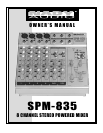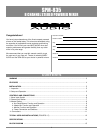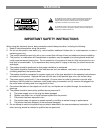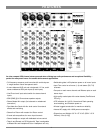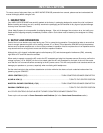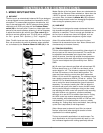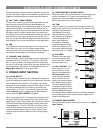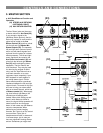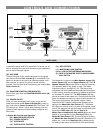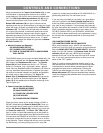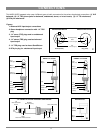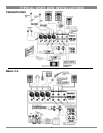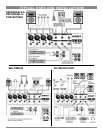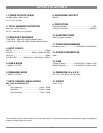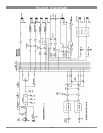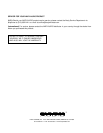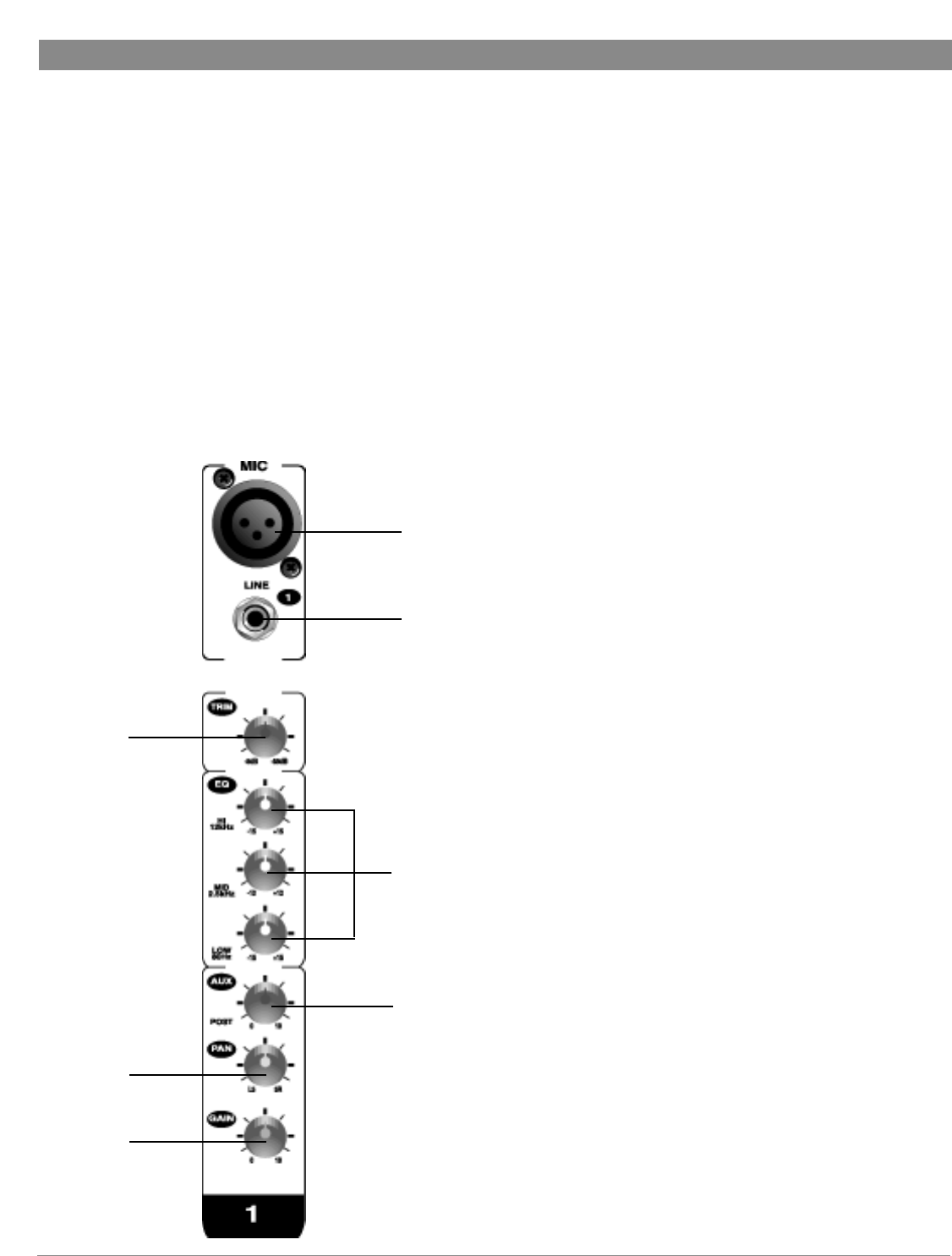
CONTROLS AND CONNECTIONS
6
1. MONO INPUT SECTION
(1) MIC INPUT
The Mic input is an electronically balanced XLR type designed
to accept signals from any balanced low impedance (Low Z)
microphone. To accommodate condenser microphones, this
input is also equipped with +48VDC phantom power globally
switchable to all XLR input jacks with the Phantom Power
switch (28) on the back panel. Dynamic or ribbon-type micro-
phones do not require phantom powering. It will be necessary
to adjust the channel gain with the input Trim control (3) to
achieve a nominal operating level. The XLR jack is configured
for: Pin1 = ground, Pin2 = positive (+), Pin3 = negative (-).
[Note: The Mic inputs are more sensitive than the Line inputs.
Also, do not connect mics with the phantom power switched
on, as indicated by the Phantom Power On LED (12) in the
Master Section of the front panel. Never use unbalanced mic
cables with the Phantom Power switched on. Never short the
+48VDC to ground, as that can cause serious damage to
your mixer. Also, turn down the Master Mix (17) to prevent
possible sharp transient noise from damaging the speakers
when turning the phantom power on or off.]
(2) LINE INPUT
The Line input is designed to accept unbalanced line-level
high impedance signals such as those from keyboards, drum
machines, or samplers. There is enough gain available on
the line input to accept even lower level signals, such as
those from an unbalanced microphone or guitar output.
(Note: Only either the Mic or the Line input of a given
channel can be connected at one time. Never connect both
simultaneously to the same channel.)
(3) TRIM (PAD CONTROL)
The trim control adjusts the input sensitivity (channel gain) of
the mic inputs on the mono input channels. This control can
be adjusted to accommodate input signals from a wide
variety of sources, from the high outputs from keyboards or
drum machines to the small signal outputs of microphones.
The trim control adjusts the input sensitivity from -5dB to -
55dB.
(4) All mono input channels are fitted with a three-band EQ.
All three bands have up to 15 dB of cut and boost, with a
center detent for “off”. The frequency response is flat when
all three EQ knobs are in the center detent position. The
upper and lower shelving controls have their frequencies
fixed at 12 kHz and 80 Hz respectively. The midrange control
has a peaking response at 2.5KHz (Q fixed at 1 octave). The
channel EQ is a valuable feature of the mixer as it allows the
user to control the tonal characteristics of each instrument
separately. For example, boosting the LOW can fatten the
sound and add punch to the bass or drums; the MID control
can be used to define the midrange or bring out the vocals;
and adjusting the HIGH control can provide a crisp sounding
high end. Another very important, yet often overlooked
technique is to use the EQ to subtract from the mix. Cutting
the HIGH control can reduce unwanted hiss during multi-
track recording, while attenuating the MID or LOW can elimi-
nate feedback in a live performance or clear up a muddy
sounding mix. Cutting away the top and bottom, then pushing
up the Gain is equivalent to mid range boost!
[Note: Always reset a channel’s input Gain (or external
devices’ output level) after altering the amount of mixer
equalization cut or boost applied.]
The key to successful equalization is to avoid excess. Too
much equalization on the input channels will result in a mix
that is smeared together with nothing specifically defined.
(3)
(5)
(1)
(2)
(4)
(6)
(7)



